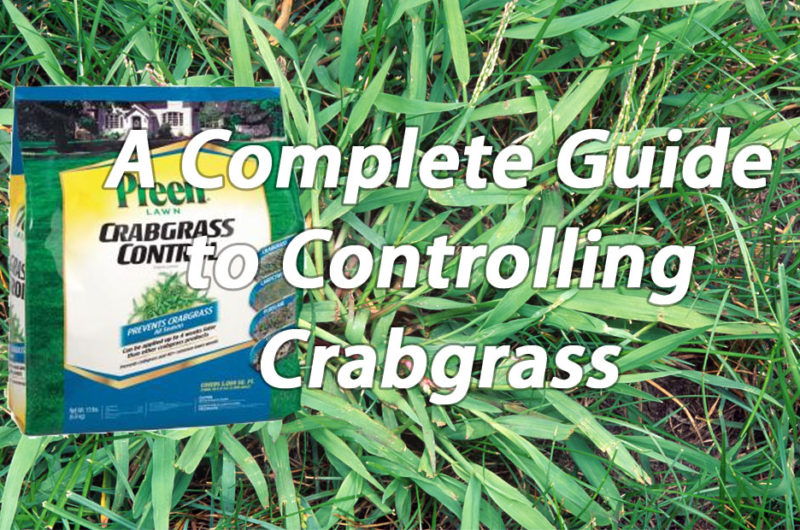If you have a lawn or backyard, you probably know how fast crabgrass grows especially during the summer. Toward the end of summer, plants produce thousands of seeds but the frost destroys the plants. However, the seeds become dormant throughout the winter period. As soon as the winter period is gone, the ground temperature starts to warm up and the formerly dormant seeds start to germinate. One of the best ways to control the growth of crabgrass is to ensure the seeds do not germinate.

The methods used to control crabgrass can be done yourself or you can hire a professional. If you want to do it yourself, you can go to a local gardening store or home improvement store and find the necessary chemicals. If you want to hire a lawn care and landscaping company you can click here to learn more.
Below is a complete guide to controlling crabgrass.
Use a pre-emergent herbicide
Pre-emergent herbicides are used to prevent or kill crabgrass before it can germinate and grow aboveground. To successfully use this method, the timing has to be right. So, you have to put pre-emergent herbicides in the soil before the weed has a chance to grow, as germination typically occurs when the soil temperatures hit 55 degrees. For this process to be successful, you also need to use reliable products labeled for control of weeds like crabgrass. You also need to carefully follow the directions on the label to get the best results.
Use a post-emergent herbicide
If you’re unsuccessful in protecting your lawn from crabgrass and it starts growing all over the place, you can use a post-emergent herbicide. You can also find a range of weed killers you can apply directly to the crabgrass to kill the already grown plant. Failing to prevent the weed before it grows should not discourage you from trying to eliminate it from your garden or lawn.
To get the best results, you should treat crabgrass plants in their early cycle because they are much easier to control when they are young than when they have grown and spread their roots. Once they grow and become too large, such as in mid-July, you may find it harder to kill the plants. You may have to water the treatment area before applying the herbicide so that your grass is not damaged in the process of killing the weeds. You may also want to follow carefully follow the instructions on the product label so you don’t make mistakes that might cost your lawn. It is advisable to avoid applying the post-emergent weed killer when the turf is stressed (during drought/ dry conditions or temperature above 85 degrees). The importance of choosing the right product for your garden cannot be overemphasized.
As spring approaches, turf managers have to include pre-emergent herbicides in their budget to help control summer weeds such as goosegrass and crabgrass. For effectiveness, apply pre-emergent herbicides to moist soil so that it can remain concentrated on the surface or in the top layer of the soil. This is especially important if you’re using liquid and not granules as herbicides. If the herbicide fails to reach the soil, crabgrass is likely to germinate and infest your lawn.
So, you can use this guide to control crabgrass and prevent the weed from infesting your garden. Improving your lawn using cultural practices can also help to control crabgrass. Until you can control the conditions that foster the growth of crabgrass, the weed will continue to pose a threat to the plants in your lawn. You can try topdressing, aeration, irrigation, and overseeding to manage weed problems.

